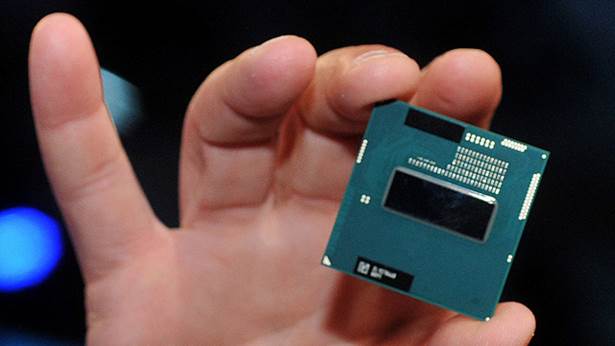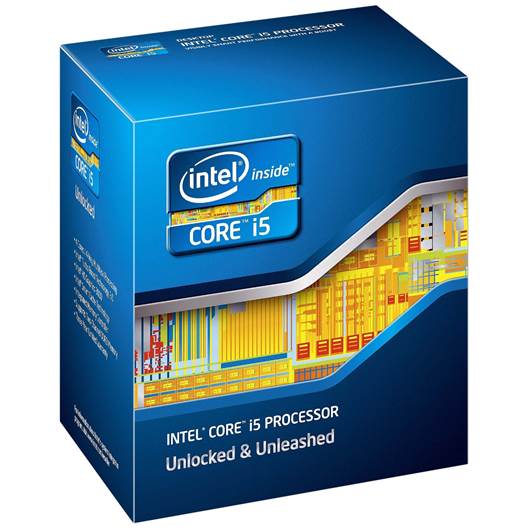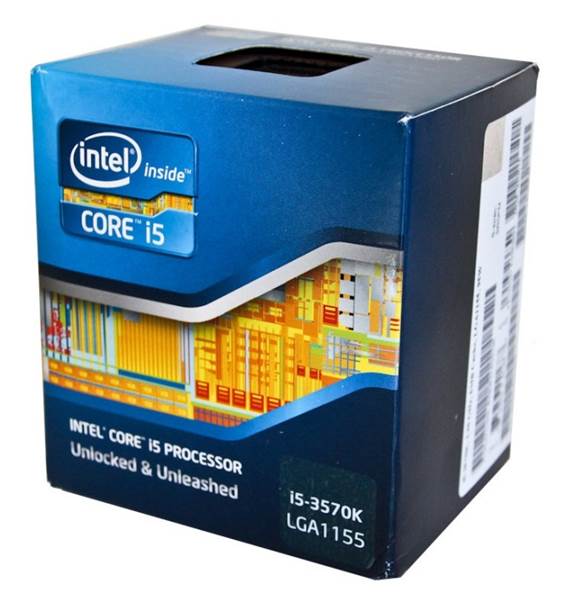A few weeks ago, we looked at low-end CPUs.
Now, we're investigating the high-end alternatives. Installing a fast processor
can give your computer an all-round boost, improving everything from boot times
to game speeds. They can be expensive purchases, but if you spend a lot of
money, they'll likely remain competitive for years afterwards. The recent
release of Intel's latest Ivy Bridge platform makes now a good time to buy a
new processor, so in this guide we'll look at the best CPUs on the market and
try to help you choose the best one for your personal needs
CPUs contain many different technologies
that contribute to performance and operation, and modern architecture means
comparing the capabilities of two models is no longer as simple as comparing
the clock speed. So, what are they, and what do they mean?

The recent release of Intel's latest Ivy Bridge
platform makes now a good time to buy a new processor, so in this guide we'll
look at the best CPUs on the market and try to help you choose the best one for
your personal needs
A CPU's socket type determines what
motherboards it's compatible with. Any motherboard with a Socket 1155 connector
can fit any Sandy Bridge chip, whether that's the lowliest Celeron or the
fastest Core i7.
The clock speed is a measure of how fast a
processor runs, but it's only worth using for comparisons against other chips
with the same number of cores and similar architecture. Comparing a single core
2.5GHz chip and a quad-core 2GHz chip yields isn't much use, but if you compare
a quad-core 2GHz chip and a quad-core 2.5GHz chip, it's clear from the clock
speed that the latter is faster.
The CPU cache reduces the amount of time it
takes to access memory by storing memory address that are currently 'in use' by
the CPU. More cache means that average speeds and faster and smoother overall.
Again, you can't really compare chips of different architectures, but more
cache is always worth having.
The 'process' refers, in practical terms,
to the distance between transistors on a CPU (in nanometers (it's actually the
half-pitch, or half of the distance). Smaller distances mean more transistors
on a chip, better performance and lower power requirements. The best current
generation chips are 22nm.
While AMD and Intel CPUs are fairly
competitive at the low end, Intel's best chips vastly outperform their rivals',
so don't be confused if the next few pages are a little AMD-light. Similarly,
we'll be looking at consumer chips rather than server architecture, so don't
expect to see any Xeons!
Intel Core i5-2550K
The Intel Core i5 2550K is a minor revision
of the i5 2500K, which was itself one of the best-value CPUs of the Sandy
Bridge generation. Don't mistake 'revision' for 'improvement', though - the
main difference is that the i5 2550K lacks any onboard graphics chip. The
decision to create it was taken to help retailers meet demand for the i5-2500K,
which was popular with gamers (who didn't need integrated graphics) and the
removal of the GPU had the side effect of allowing it to be overclocked a
little more (but necessitated the use of a separate graphics board).

Intel
Core i5-2550K
That's not to say the 2550K is worse than
the 2500K, just that it's aimed at overclockers and performance enthusiasts
rather than those who want to build a general-use PC. The i5 2550K's is
actually better value than its closest Ivy Bridge equivalent, the i5 3570K, by
virtue of being around 6% slower but 17% cheaper. If you can live without the
integrated graphics, it's not a bad choice.
That does assume that you can live without
the additional features Ivy Bridge offers, the bulk of which are aimed at the
highest-end of the PC market: things like PCI Express 3.0, support for multiple
4k displays and improved support for high-end RAM are all features that are
unlikely to trouble someone buying at what is essentially the top-end of the
mid-field. If you're building a high-end system from scratch, Ivy Bridge's
features could prove necessary in years to come – but if your objective is to
speed up an existing system, Sandy Bridge CPUs arguably give you a better deal.
As for whether the 2550K is a better
purchase than the 2500K, that's debatable. They're almost identical chips, and
while the former can be overclocked a little more, it's not substantially
faster out of the box nor does it have a much higher ceiling (both can reach
around 4.5GHz with proper cooling). If you buy the 2550K, you're spending $30
more to get no graphics and a fairly negligible speed increase at the most
extreme end of overclocking. Even if you don't care about the lack of a GPU,
£20 represents a fairly hefty percentage increase in price, so take care before
you lay down your money.
|
Details
·
Price: $276
·
Socket: LGA1155
·
Clock Speed: 3.4GHz
·
Cache: L3/6MB
·
Process: 32nm
Micro Mart
·
Quality: 5
·
Value: 8
·
Overall: 7
|
Intel Core i5-3570K
Intended as the top-end Core i5 in the Ivy
Bridge generation of chips, the i5 3750K is the official replacement of the
gamer's choice CPU, the i5 2500K. This factor alone means it instantly had an
awful lot to live up to.

Intel
Core i5-3570K
Although the clock speed, cache amount and
number of cores are all the same, the die-shrink and new Ivy Bridge features
bring it out a little ahead in terms of raw specs – but how does it compare in
the real world?
As well as a process shrink, the move to
Ivy Bridge also introduced so-called '3D' Tri-gate transistors (which are more
efficient and better performing in all sorts of ways), reduced power
consumption and slightly upgraded the GPU. While the technical revision could
have been Intel's cue to add extra features, they instead decided to keep the
specs broadly similar and make the price competitive. As such the i5 3750K is
barely £20 more expensive than the i5 2500K, and the same price as the i5
2550k. So, really, the question is why shouldn't you take a good look at this
CPU before paying attention to the two, every capable Sandy Bridge competitors?
Frankly, there isn't one good reason. The
i5 3750k might not be much better as a CPU, but lower power requirements from
the die shrink combined with better integrated graphics (courtesy of the Intel
HD Graphics 4000 DX11 chip, which has 16 execution units compared to the i5
2500K's 12) means that there's really nothing bad about it. At release time,
the only complaints were that it wasn't impressive enough to justify an upgrade
from the i5 2500K – and if that's the only problem, it's not going to affect
anyone buying the processor new!
The icing on the cake is that the i5 3750K
can be overclocked a fraction more than even the i5 2500K could. We're talking
a difference along the lines of hitting 4.6GHz instead of 4.5GHz, but with the
other advantages the chip offers, it's another factor worth taking notice of.
If you want the best balance of power and price at any level, this is the one
to go for.
|
Details
·
Price: $270.5
·
Socket: LGA1155
·
Clock Speed: 3.4GHz
·
Cache: L3/6MB
·
Process: 22nm
Ratings
·
Quality: 6/10
·
Value: 9/10
·
Overall: 8/10
|